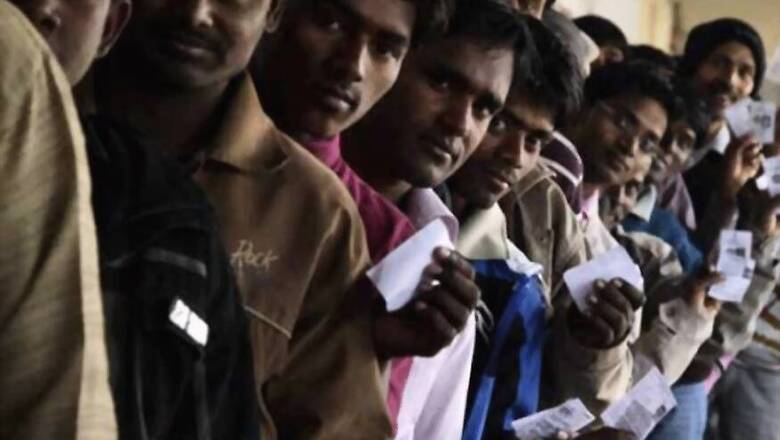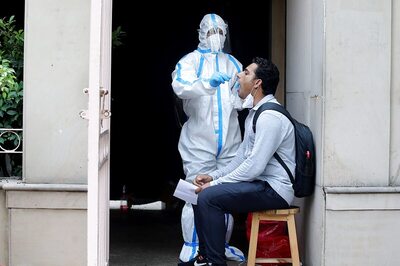
views
New Delhi: When the Election Commission announced the dates last month for the upcoming Lok Sabha elections, few people were surprised that polling in Uttar Pradesh would be spread over all seven phases. The state, due to its size, has witnessed elections in multiple phases in the past — even the 2017 state elections were held in seven phases.
What this meant was that UP, with its complex caste dynamics, was set to remain in the headlines for the entire duration of elections. With every passing phase of election, a specific region will be going to the ballot — each with its own caste, political, and social matrices which will play a major role in the outcome of these elections.
How Awadh Votes
Politically, the significance of the region can be gauged from the fact that it has given three prime ministers to the country — Indira Gandhi who represented the Rae Bareli constituency between 1967 and 1977; VP Singh, who was elected to the 9th Lok Sabha from Fatehpur constituency; and Atal Bihari Vajpayee, who represented Lucknow.
The region comprises at least 27 parliamentary constituencies. To put this into perspective, consider the fact that Awadh has more number of Lok Sabha seats than some of the bigger states such as Rajasthan and Gujarat.
In fact, Awadh would have possibly been a separate state if Bahujan Samaj Party (BSP) supremo Mayawati’s plan to divide UP in four smaller states had turned into reality.
Of these 27 seats, the Bharatiya Janata Party (BJP) had won 24 in 2014, while its ally Apna Dal secured one. The only constituencies left unconquered by the BJP, which swept the entire state riding on the ‘Modi wave’, were the Congress bastions of Rae Bareli and Amethi — represented by Sonia Gandhi and Congress president Rahul Gandhi, respectively. The other remaining seat was won by the Samajwadi Party (SP) from its stronghold Kannauj.
The BJP received nearly 41.5 per cent of the votes in the region, while SP, BSP and the Congress bagged a vote share of 22.2 per cent, 19.2 per cent 12.8 per cent, respectively.
However, ever since the beginning of the coalition era in the early 90s, no party has registered a sweep as significant as the BJP in Awadh. Although, one party or the other dominated every alternate election, the 2014 results turn out to be an outlier when compared previous results.
For instance, Congress had won 14 constituencies in Awadh, followed by SP and BSP with six seats each in 2009. In the same Lok Sabha elections, the BJP on the other hand, had won only Lucknow — its traditional stronghold in the region.
Interestingly, BJP’s success in the 16th Lok Sabha elections came as a sort of resurgence after a rather silent period between 1999 and 2014 elections. In the two general elections that were held during this period (2004 and 2009), BJP was pushed to the margins in the Awadh region. On both these occasions, the party failed to win any seat except Lucknow, a constituency it hasn’t lost since 1991.
Congress a Fringe Actor?
BJP’s win in the 2017 state assembly elections was nothing short of a sequel to its 2014 whitewash in the state. The party formed the government with a thumping majority of 325 of the total 403 seats, of which 312 were won by the BJP alone, while the rest came from its alliance partners. In Awadh, which accounts for 137 seats in the state assembly, the party secured 116 seats. Of the remaining 21, while SP bagged 11 seats, four each were won by BJP’s partner Apna Dal and Congress, and two went to others. The BSP, much like the Lok Sabha elections in 2014, drew a blank in the region. The results in the state assembly were in complete contrast to the 2012 state elections, particularly with regard to the tally of SP and the BJP. In 2012, SP had secured 95 seats in this region, whereas BJP had come a distant third with just 12 seats. In 2017, however, it was the other way round where BJP took the pole position and pushed SP to the margins.
On the other side of the political spectrum, contrary to popular belief, Congress hasn’t had any significant success in Awadh region since its historic win in the 2009 Lok Sabha elections. Even the fact that Congress president Rahul Gandhi and former party president Sonia Gandhi represent two parliamentary constituencies in the region, the party only managed to win nine and four seats in Awadh in the 2012 and 2017 assembly elections, respectively.
Instead, Congress failed to win even a single seat of the five assembly segments that fall in the Amethi Lok Sabha constituency, and could only secure two in Rae Bareli amid the ‘saffron wave’ in 2017.
Demographics
With a population accounting for nearly a quarter of the electorate, the Scheduled Castes — including Dalits — have a substantial influence over the electoral outcomes in the region. On top of this, Awadh constitutes roughly 15-20 per cent of Muslim population as per Census 2011 data.
With BSP’s vote base among the SCs and SP having influence among Muslim voters, the newly-forged SP-BSP alliance would look to consolidate this vote, with Congress also staking a claim over a share of it since it has been left out of the alliance.
Moreover, a quarter of the population also comprises the upper-castes, and Congress and the BJP are likely to be in a direct competition for these votes. Other dominant communities in the region are Yadavs, a traditional SP vote base and Kurmis, who back the Apna Dal and are expected to turn in favour of the BJP-Dal alliance.
In terms of the rural-urban divide, merely four of the parliamentary constituencies in Awadh are urban or semi-urban (two each). The remaining 23 are rural segments which holds significance in itself.
Vote-Arithmetic & Vote Swing
On a simple summation of vote share of the BSP and SP, which contested separately in 2014, analysis shows that they would have won 13 of the 25 seats (excluding Amethi and Rae Bareli, which the alliance isn’t contesting) in the region had they tied up in the previous elections. Additionally, a vote-swing in the favour of the SP-BSP combine over a consolidation of their vote-bases would leave them with an added advantage.
A show of this vote swing was first seen in the Phulpur parliamentary bypoll in this region in May last year. The constituency was won by BJP’s Keshav Prasad Maurya in 2014, who vacated the seat in 2017 to take the job of the Deputy Chief Minister of UP.
Maurya had won the seat comfortably in 2014 with a vote share of 52.4 per cent. While the votes received by the SP at the second spot were just 20.3 per cent, when coupled with BSP’s votes, Maurya’s margin of victory stood at 14.8 per cent.
During the bypoll, when the SP candidate Nagendra Pratap Singh Patel won the seat with BSP support last year, he collected 47.12 per cent of the votes, whereas the BJP candidate secured 38.95 per cent of the votes. Hence, a victory margin of 8.17 per cent for the SP candidate.
While the BJP lost 13.45 per cent of its votes compared with 2014, this was a roughly 10 per cent of vote-swing in favour of the SP-BSP combine. Rest of the BJP’s losses were divided among other candidates.
Therefore, if a similar swing persists in the ensuing Lok Sabha elections as well, the SP-BSP alliance might be able win more than the 13 seats that a mere summation of votes from 2014 would grant them on paper.



















Comments
0 comment